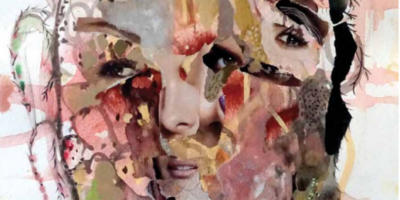
Women and Addiction: The Pop-Culture Parallels
Discussions about addiction among Jews—as with most cultural conversation—tend to center the experiences of men. But in recent history, from the buttoned-up 1950s to today’s opioid epidemic, Jewish women in the spotlight have spoken about the demons that plague them as well.
1953:
 On February 4, 1953, Lillian Roth, a former childhood starlet whose career was sidetracked by a lifestyle of excess, confessed to America on the hugely popular television program “This Is Your Life” that she had suffered for years with alcoholism and mental and emotional instability. Her auto-biography, I’ll Cry Tomorrow, detailed the pressure her parents placed on her as a child, pushing her into performance at age six. Though Roth eventually converted to Catholicism, she never stopped identifying as a Jew. She was one of the first women to “go public about her alcoholism,” wrote Audrey Waxman in a piece on Jewish women and addiction, adding that Roth is “credited with helping Americans to view alcohol addiction as a disease, not a vice….”
On February 4, 1953, Lillian Roth, a former childhood starlet whose career was sidetracked by a lifestyle of excess, confessed to America on the hugely popular television program “This Is Your Life” that she had suffered for years with alcoholism and mental and emotional instability. Her auto-biography, I’ll Cry Tomorrow, detailed the pressure her parents placed on her as a child, pushing her into performance at age six. Though Roth eventually converted to Catholicism, she never stopped identifying as a Jew. She was one of the first women to “go public about her alcoholism,” wrote Audrey Waxman in a piece on Jewish women and addiction, adding that Roth is “credited with helping Americans to view alcohol addiction as a disease, not a vice….”
1973:
 Musician Cass Elliot (born Ellen Cohen to Jewish parents in Baltimore in 1941) found heroin after she found fame. As a member of the Mamas and the Papas, she was revered for her distinctive voice, and after the group dissolved, she tried to find her footing with solo work. During her first night headlining in Las Vegas with a solo show, the audience realized something was amiss—Cass Elliot was sick, barely rehearsed,and unable to get through her songs. The show closed after one night, and a few weeks later it came out that she had shot heroin just before going on stage. Acquaintances and biographers would eventually unravel years of drug use and abuse after she died of heart failure at 32, leaving an iconic catalog of work.
Musician Cass Elliot (born Ellen Cohen to Jewish parents in Baltimore in 1941) found heroin after she found fame. As a member of the Mamas and the Papas, she was revered for her distinctive voice, and after the group dissolved, she tried to find her footing with solo work. During her first night headlining in Las Vegas with a solo show, the audience realized something was amiss—Cass Elliot was sick, barely rehearsed,and unable to get through her songs. The show closed after one night, and a few weeks later it came out that she had shot heroin just before going on stage. Acquaintances and biographers would eventually unravel years of drug use and abuse after she died of heart failure at 32, leaving an iconic catalog of work.
1994:
 When Prozac Nation hit the shelves in 1994, its author, Elizabeth Wurtzel, was 26 years old. This memoir was instantly polarizing. Wurtzel grew up wealthy in New York City, the child of divorced Jewish parents who, by her own description, had little tolerance for emotional wavering. She attended Harvard while under a constant cloud of depression.
When Prozac Nation hit the shelves in 1994, its author, Elizabeth Wurtzel, was 26 years old. This memoir was instantly polarizing. Wurtzel grew up wealthy in New York City, the child of divorced Jewish parents who, by her own description, had little tolerance for emotional wavering. She attended Harvard while under a constant cloud of depression.
Prozac was her first chemical lifeline. Her second was Ritalin, which proved to be her on-ramp to a serious cocaine problem. She completed a second memoir, centered on addiction, in the wake of her recovery. In contrast to Cass Elliot or Lillian Roth—women suffering from addiction who happened to be Jewish—Wurtzel actively connected the dots between her privileged Jewish upbringing and her eventual downward spiral. Academic pressure, a commitment to keeping up appearances, and religious expectations colored her formative years, and left her wondering how much of her depression sprung from nurture rather than nature.
2000s:

In the last decade we’ve heard many voices of those struggling to break out of dangerous patterns of behavior, while“addiction memoirs” have found a wide audience. There is a desire, especially in the shadow of the opioid crisis, to find a single answer for the root causes of addiction. Jewish women have been part of the conversation.The 2011 death of singer Amy Winehouse brought substance abuse into the news cycle for weeks, as the world mourned and struggled to comprehend what had happened. Cat Marnell, a former editor for XoJane, chronicled her dependency on Adderall in How to Murder Your Life, which became a 2017 bestseller.
Fiction, too, has seen a rise in addiction as subject. Invisible as Air, a new novel by Zoe Fishman, set to be released in September 2019, tackles the “pressures of expectations” for a Jewish woman trying to support her family and maintain the right appearances.
And on television, Natasha Lyonne’s Russian Doll examines the cycle of addiction through a Talmudic lens, informed by her early years as both a student at an Orthodox academy and a heroin addict.



